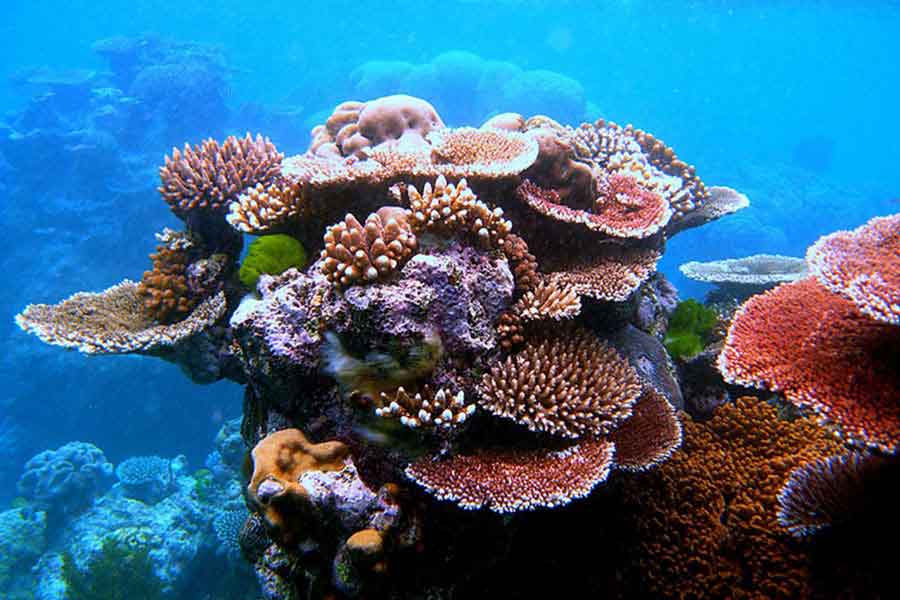
Never before has life manifested itself as beautiful, diverse, and colorful as in a coral garden. The intricate branches and the multitude of fish and invertebrates that live within them leave divers in awe of such splendor.
The Great Barrier Reef in Australia stretches over 2,200 kilometers and is the largest structure built by an animal on our planet, to the extent that it can be seen from outer space. The incredible thing about this splendid and diverse construction, resembling flowers of the most brilliant colors, is that it is formed by very small animals, less than a centimeter in size, called polyps, which are also carnivorous.
Coral polyps attach themselves to a firm base, usually the skeletons of their predecessors, and generate their own exoskeleton that affirms them to the substrate. This accumulation of polyps forms a «coral head» where hundreds of these tiny polyps live. The fastest-growing coral branches only grow at a rate of ten centimeters per year, while others reduce their growth to just one centimeter annually. Thus, a branch of only one meter in length may have taken a whole century to form.
Polyps get their name from the Greek word meaning «many arms.» When the polyp is open, usually at night, it extends its brightly colored tentacles to capture microscopic animals from the zooplankton, which form the basis of their diet. Rarely does a polyp consume its own weight in food during its entire life. Coral reefs require warm waters to develop, which is why they are found only at a latitude of 30° north and south of the Equator.
Humans are only beginning to understand the importance of corals in the world. Their intricate organization occupies only 0.2% of submerged areas, yet a small reef can contain up to 3,000 different animal species that depend on the coral. Polyps, with their ability to thrive in nutrient-poor waters, are responsible for sheltering and feeding a large number of fish and crustaceans in otherwise barren waters.
Everything in a reef is alive; it is astonishing that animals with the appearance and consistency of stone possess such tremendous fragility. A silent crowd of small, powerless builders in the face of any changes. For example, if a forested area near a coral coast is deforested, rainwater, unable to be absorbed by trees and vegetation, will flow into the sea in large quantities, altering the salinity of the coastal water and killing the coral reef and its inhabitants.
We must understand that life is so interconnected, so intricately related, that a tree cannot be cut down in the jungle without a dolphin trembling in the depths of the sea.
«You cannot defend what you do not love, and you cannot love what you do not know.»

